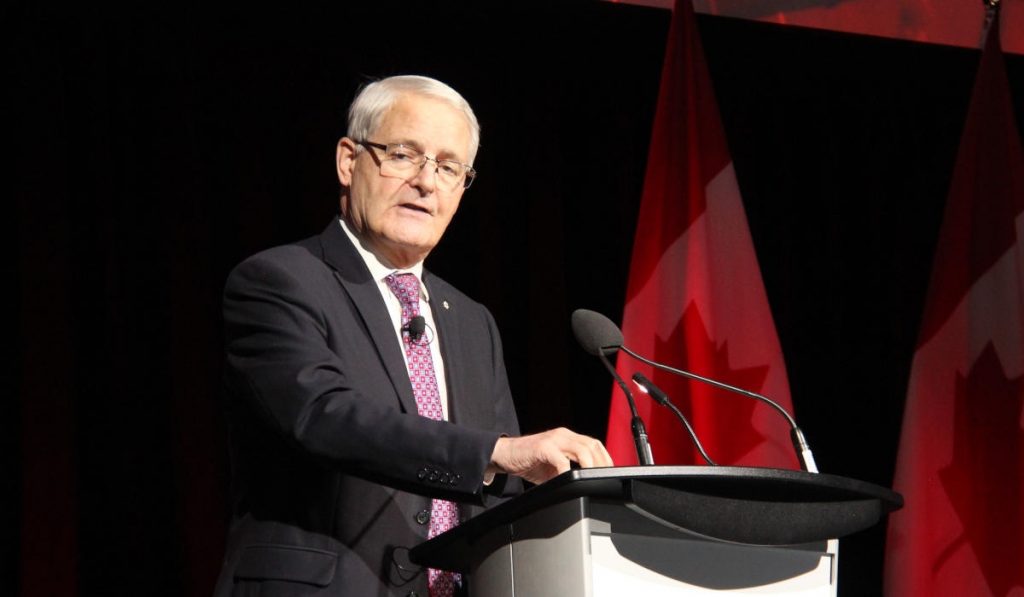
News
Garneau introduces new fatigue regulations
Marc Garneau, Minister of Transport, today announced changes to the Canadian Aviation Regulations to improve air travel safety for passengers and flight crews. The changes, as described by Transport Canada, introduce: Prescribed flight and duty time limits that respect modern fatigue science and international standards to limit the amount of time a crew member can be on the job; and Fatigue Risk Management Systems that allow operators to set flight hours based on their unique operations if they can demonstrate that alertness and safety will not be affected. (Specific details of the changes, noting the difference between old and new regulations, are listed at the end of this article.)
December 12, 2018 By Wings Staff
 Marc Garneau
Marc Garneau Since 2015, Transport Canada has been working on the new regulations that apply to commercial transport services, including: Major Canadian airline operators (subpart 705 of the Canadian Aviation Regulations), as well as smaller and regional operators (subparts 703 and 704 of the Canadian Aviation Regulations).
The government asserts the past regulatory regime did not reflect the scientific principles and knowledge on fatigue discovered over the last few decades. “Transport Canada’s new regulations align with today’s scientific data, international standards and best practices, and respond to concerns raised by communities, pilots and airlines,” said Garneau. “By providing air operators the option to implement Fatigue Risk Management Systems, these new regulations also recognize the unique operations and realities of Canadian air operators.”
The new regulations focus on three primary Transport Canada objectives, in relation to flight duty limitations and rest time, including: Introducing the concept of Fit for Duty and alternative Fatigue Risk Management Systems (FRMS); increasing Canadian Aviation Regulations compliance with ICAO Standards; and reducing existing gaps with other jurisdictions like the FAA and EASA.
Transport Canada’s amendments to the Fit for Duty regulations will prohibit any flight crew member to work when not fit for duty. This includes consumption of alcohol or drugs, mental and physical conditions, and fatigue. The amendments will also prohibit a crew member from working within 12 hours of drinking alcohol, up from the previous limit of eight hours.
Transport Canada explains, to the industry deal with challenges they may have in implementing these new regulations, Canada’s major airline operators will have two years to implement the new requirements. Smaller and regional operators will have four years to comply. Transport Canada also aims to support and work in close collaboration with northern and small air operators during the implementation of these regulations.
New prescribed flight and duty time limits (subparts 705, 704, and 703 of the Canadian Aviation Regulations)
Flight time
Previous regulations (1996)
1,200 hours in any 365 consecutive days
300 hours in any 90 consecutive days
120 hours in any 30 consecutive days
40-60 hours in any 7 consecutive days
New regulations
1,000 hours in any 365 consecutive days
300 hours in any 90 consecutive days
112 hours in any 28 consecutive days
Flight duty period
Previous regulations (1996)
14 hours (aerial workers and air taxi operators) or
13 hours, 45 minutes (commuter operations and airline operators)
New regulations
Maximum 9-13 hours – based on start time of day/sectors flown
Rest periods
Previous regulations (1996)
8 hours plus time for meals, personal hygiene, and travel to and from suitable accommodation
New regulations
At home – 12 hours or 11 hours plus travel time, or 10 hours in suitable accommodation provided by the air operator
Away from home – 10 hours in suitable accommodation
Time free from duty
Previous regulations (1996)
36 hours / 7 days; or
3 days / 17 days; or
3 periods x 24 hours / 30 days
13 periods x 24 hours / 90 days.
New regulations
Option 1:
1 single day free from duty per 7 consecutive days
4 single days free from duty per 28 days
Option 2: 5 days off per 21 days
Consecutive night duties
Previous regulations (1996)
Not applicable
New regulations
Maximum of 3 nights of duty in a row without a rest during the night
If a rest is provided during the night, up to 5 consecutive nighttime duty periods
Fatigue Risk Management Systems
Previous regulations (1996)
No Fatigue Risk Management Systems option
New regulations
Option to use Fatigue Risk Management Systems
Coming into force
New regulations
24 months for major Canadian airline operators (subpart 705)
48 months for smaller and regional operators (subpart 704 and 703)
The Government of Canada has now published the final Flight and Duty Time regulations in Canada Gazette II.